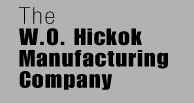High-speed electric spindles are the absolute core of CNC machine tools. Their technical prowess and performance directly determine the overall quality and capabilities of these machines.
They also effectively set the pace for machine tool development itself. This article delves into the fascinating journey of the electric spindle industry, from its origins to its current state and future trends.

Electric Spindles: A Brief History and Key Players
High-speed electric spindles are revolutionary because they integrate the motor directly into the spindle. This “zero transmission” design eliminates complex intermediate components. It offers numerous advantages like broad speed control, minimal vibration, and rapid start-stop functions. The result? Manufacturers significantly boost productivity, enhance processing accuracy, and achieve superior surface quality.
Researchers began studying electric spindles in the 1950s. Initially, they applied them in internal cylindrical grinders. With the rise of CNC machine tools, their use exploded. Today, manufacturers offer a wide range of commercial products. These boast impressive specifications like a maximum torque of 1500 N·m and speeds up to 300,000 revolutions per minute (r/min). Diverse control systems support these capabilities.
Companies like Germany’s GMN and Siemens, Switzerland’s FISCHER and IBAG, Italy’s GAMFIOROMLAT, and the United States’ SETCO lead the charge in advanced high-speed electric spindle technology. Japan also boasts a mature electric spindle industry. It offers a comprehensive product range and excellent cost-effectiveness. OKUMA and TOYO spearhead this industry.

Let’s highlight a few of these pioneers:
FISCHER (Founded 1939): A global leader in precision spindle manufacturing, FISCHER offers three main product categories: milling, grinding, and drilling. They specialize in high-precision electric spindles for demanding sectors. These include medical, micro-nano processing, and precision watchmaking.
IBAG (Founded 1941): IBAG is a world-renowned high-speed electric spindle manufacturer. Its products are crucial for micro-hole processing, precision engraving, mirror processing, drilling, tapping, various machining centers, and dual-axis swivel heads.
Kessler (Founded 1923): Kessler is a globally recognized manufacturer of motors and spindles for machine tools. Its products primarily find use in PCB drilling machines, CNC milling machines, and machining centers.
GMN (Founded 1908): GMN’s core products include electric spindles, precision ball bearings, one-way clutches, and non-contact seals. The company holds a strong reputation in machine tool spindles. It can provide electric spindles of any size, torque, speed, and power for various specialized applications.
WestWind (Founded 1980): WestWind is one of the world’s leading manufacturers of air-bearing electric spindles. Its spindles use integrated non-contact air bearings. These generate very little heat during operation, ensuring a long lifespan. Manufacturers commonly use them for precision drilling and milling of PCB materials.
The Global Competitive Landscape
European and American electric spindle manufacturers dominate the global market. They possess advanced technology and reliable products. While China has made strides in producing mid-to-low-end electric spindles, the high-end segment still relies heavily on imports. However, Chinese brands like Guangzhou Wuzhi Electromechanical, Luoyang Axis Research Institute, Wuxi Bohua, and Jiangsu Xingchen are steadily making their mark.
China’s electric spindle technology is advancing rapidly. Chinese companies are actively innovating. They constantly overcome technical hurdles and significantly boost their self-reliance. They are also gradually entering the global market.
Diverse Applications and Characteristics of Electric Spindles
Electric spindles are highly specialized. Manufacturers tailor their designs to specific machining tasks:
For Machining Centers: These spindles find use in CNC milling machines and machining centers. They feature high speed, high precision, and robust low-speed/high-torque capabilities. They often include automatic tool loosening and clamping functions. They also offer precise speed, stop, and zero-speed locking features.
For Grinding: These are primarily constant-torque spindles. Manufacturers find them in surface grinding machines. They feature high speed, high precision, and excellent sealing properties.
For CNC Lathes: These spindles offer high speed, high precision, and substantial low-speed/high-torque performance. They can accommodate power chucks or rotary hydraulic cylinders. This achieves automatic workpiece clamping/unclamping. They also maintain constant speed for thread turning.
For Drilling: These spindles find employment in specialized drilling machines. This includes those for printed circuit boards (PCBs). They boast high axial rigidity, high speed, and high precision. PCB drilling spindles frequently use air dynamic and static pressure bearings (air bearings).
For Engraving and Milling: Manufacturers design these for CNC engraving and milling machines. They are especially useful for complex surface processing and woodworking machinery. They combine high speed and high precision. They allow for convenient tool changes. Woodworking machine spindles typically feature air cooling and high sealing.
Special-Purpose Electric Spindles: This category includes spindles for drawing and rolling, cutting, centrifuges, testing machines, and other unique applications.

2.2 Electric Spindle Market Size
In 2021, the global electric spindle market reached $1.4 billion in sales. Steady demand from the electronics, machinery manufacturing, automotive, and aerospace sectors fueled this growth. Notably, in 2024, China experienced a sustained surge in demand for machining center spindles. This was particularly evident in the high-precision and high-efficiency domains of mold manufacturing and aerospace parts processing.
The increasing adoption of CNC machine tools, coupled with expanding demand and accelerated industrial upgrades in the machine tool industry, presents significant opportunities and vast potential for the electric spindle sector.
Conclusion
High-speed electric spindles are core components of CNC machine tools. They offer compelling advantages such as high speed, high precision, and “zero transmission.” Manufacturers find them indispensable across diverse applications like milling, grinding, and drilling.
While European leaders like Germany’s GMN and Switzerland’s FISCHER set the technological benchmark, China started later.
However, it has achieved remarkable technological advancements. Some domestic companies have successfully entered the high-end market.
The ongoing upgrade of manufacturing industries and the growing need for precision machining ensure a promising future for the electric spindle market.
